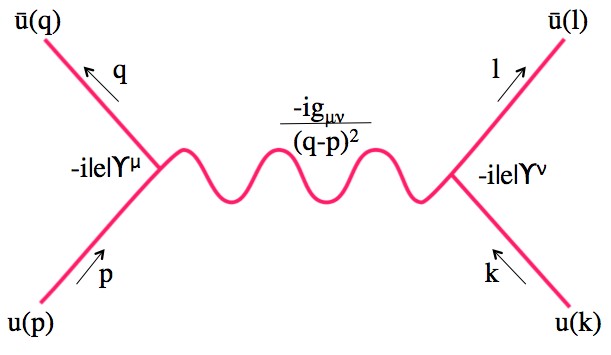
http://askamathematician.com/2010/10/q-what-are-feynman-diagrams-how-are-they-used-theoreticallypractically-and-are-there-alternativecompeting-diagrams-to-feynman%E2%80%99s/
This diagram is an example of a Feynman Diagram. Richard Feynman came up with these diagrams as a sort of conceptual and mathematical shorthand to describe the interactions of particles. Each line represents something:
The straight lines represent particles (electrons, positrons, etc.). The interactions occur where the lines intersect. The wave represents a photon being either emitted or absorbed. These diagrams were used as Feynman looked into Quantum Electrodynamics. In 1965, he was awarded the Nobel Prize for his work in this field. (Nobel)